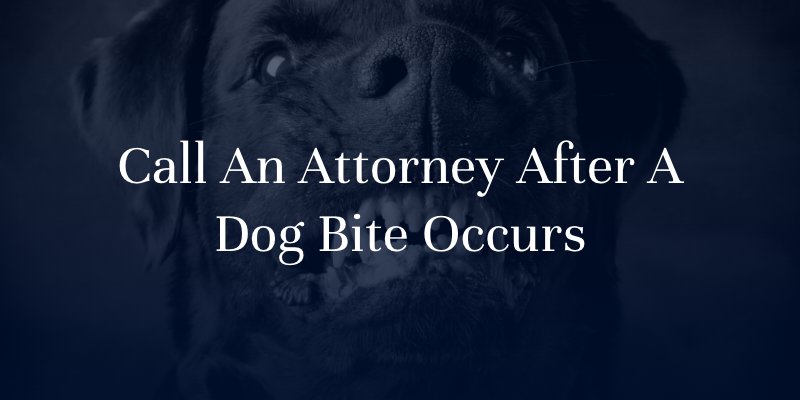Dangerous Dog Breeds
In the state of Washington, there are laws that deal specifically with dogs deemed “dangerous.” However, Washington law does not directly reference specific dog breeds. The reality is that there are certain dog breeds that are responsible for more bites and attacks than others. Here, we want to discuss dangerous dog breeds as well as the importance of working with an attorney if you have sustained a dog bite injury.
Dangerous Dogs: Natural or Environmental
In order to properly define a “dangerous dog,” we have to examine several factors. First of all, the term “dangerous” can be subjective in and of itself. When most people think of dangerous dogs, they think of larger breeds that can inflict significant damage with a single bite or an attack with multiple bites. However, smaller dogs can also be incredibly aggressive and cause injuries.
If you conduct your own research into the most dangerous dog breeds, you will usually see articles that specifically state that no dog breed is inherently dangerous, though there are other studies that say some breeds exhibit more aggression than others.
A study from Scientific Reports says that male dogs are more aggressive than female dogs. The study also says that dogs who spend most of their time in the company of other dogs are less aggressive overall.
The eternal debate will rage as to whether dogs become aggressive as a result of their external environment or as a result of the breed of dog. Certainly, external factors such as abuse and neglect contribute to individual dogs’ outward behavior. However, we do have to acknowledge that certain breeds of dogs have been banned from municipalities or by individual tenants and landlords.
Top Dangerous Dogs
Perhaps the best place to examine a “dangerous dogs” list is a recent study by Forbes Advisor. This list examined the most common dog breeds on homeowners’ insurance companies’ banned list. This includes:
- Dobermans
- Pit bulls
- Rottweilers
- Chow Chows
- Presa Canarios
- Akitas
- German Shepherds
- Huskies
- Mastiffs
- Alaskan Malamutes
- Bullmastiffs
The reason we looked at insurance carriers’ banned dog breed lists is due to the fact that insurance carriers are well attuned to dog bite incidents. Dog bite injuries are one of the most common claims made against homeowners insurance policies, and these insurance carriers know that dog bite incidents can lead to extensive payouts, particularly when it comes to covering medical expenses as well as legal fees for defending claims. If an insurance carrier sees a risk, they will take steps to mitigate those risks. This includes banning certain breeds of dogs.
Which Breeds Are Responsible for the Majority of Dog Attacks?
DogsBite.org is an advocacy group that aims to raise awareness about dog attacks and educate owners about the dangers of these violent incidents. The organization also compiles data about dog bites that occur throughout the United States.
According to data collected between 2005 and 2019, dogs killed 521 people in the United States. The following breeds were responsible for fatal attacks in 2019 alone:
- 69% of these fatalities were caused by pit bulls
- 13% of these fatalities were caused by mixed-breed dogs
- 8% of these fatalities were caused by rottweilers
- 4% of these fatalities were caused by boxers
- 4% of these fatalities were caused by Australian cattle dogs
- 4% of these fatalities were caused by German shepherds
- 4% of these fatalities were caused by a dog of an unknown breed
Additionally, eight dog breeds caused one death each: American bulldog, Belgian Malinois, coonhound, Doberman pinscher, Dutch shepherd, Great Dane, husky, and mastiff. Eight dog bite fatalities involved dogs from 2 or more different breeds.
What to Do If You Encounter a Dangerous Dog Breed in Washington
It is important to note that, just because a dog is from a breed that has a high rate of attacking humans, it does not mean that the animal will automatically attack unprovoked. However, these animals may have a propensity for violence, which can be exacerbated by environmental factors.
When you encounter a dangerous dog breed, remain calm and keep a close eye on the animal for any signs of aggression. These may include:
- Growling or snarling
- Raised hackles
- Baring teeth
- Stiff body posture
- Direct, intense staring
- Lunging or charging movements
- Snapping jaws
- Pinned back ears
- Tail tucked between legs
If the dog begins to exhibit signs of aggression, your safety and the safety of others should be your top priority. Here are essential steps to take to protect yourself and minimize any risk of harm:
- Do Not Panic: Remain calm and avoid making loud noises or sudden movements that might provoke the dog.
- Avoid Eye Contact: Do not stare directly at the dog. Dogs may perceive eye contact as a challenge or threat.
- Stay Motionless: If the dog approaches you, stand still with your arms at your sides. Do not run, as this could trigger the dog’s chase instinct.
- Distract the Dog: If you have an object like a jacket or bag, use it to distract the dog by giving it something to bite other than yourself.
- Back Away Slowly: Once the dog loses interest, slowly back away until it is out of sight. Do not turn your back on the dog or run.
- Protect Your Body: If a dog attacks, use your forearm or any object you can find to keep between you and the dog. Try to remain upright and protect your face, neck, and chest.
- Report the Incident: After reaching safety, report the encounter to local animal control. Provide as much detail as possible, including the time, location, and description of the dog.
- Seek Medical Attention: If bitten, wash the wound with soap and water immediately and seek medical attention to reduce the risk of infection or other complications.
Children are the most vulnerable to attacks from dangerous breeds. Never leave a child unattended with a potentially dangerous dog, and always supervise any interactions between the child and the animal.

Call an Attorney After a Dog Bite Occurs
If you or somebody you care about has sustained an injury caused by a dog in Washington, we encourage you to reach out to an attorney as soon as possible. The Seattle dog bite lawyers at Colburn Law have a track record of success when it comes to recovering compensation on behalf of clients in these situations. We work diligently to recover money for medical bills, lost wages, and pain and suffering damages.
